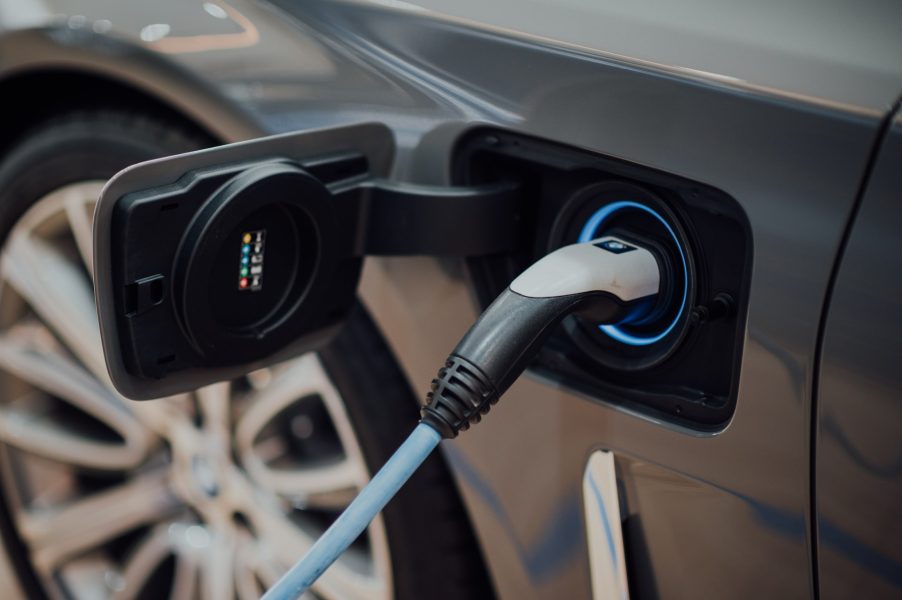
Fueling Vehicles: What are your future alternatives to petrol?
For your businessThe shift to zero emissions mobility is underway. With just about every major vehicle manufacturer moving away from production of the traditional internal combustion engine, it’s time to start seriously looking at the alternatives that will best benefit your organisation. And it looks like there will be plenty of options available when it comes to reducing fleet emissions.
It is likely that any switch from petrol/diesel powered vehicles will incorporate a mix of new vehicle fuel sources, depending on your mobility requirements. So, what will be the major alternatives to petrol and diesel, and where are they sitting in terms of their development?
Battery electric vehicles (BEVs)
Battery electric vehicles use electrical energy stored in a battery pack consisting of groups of lithium-ion batteries, or cells, that supply the power needed for everything from moving cars to running air conditioning. An electric car’s battery charges in much the same way the lithium-ion battery in a mobile phone does, just on a much larger scale. Instead of tiny explosions occurring in your car’s engine, electrical energy stored in these battery packs turns an electric motor (or motors) connected to the wheels, which drive the car forward.
Scientists at Penn State University in the US recently announced a new lithium-ion EV battery that they claim could charge a typical EV battery in just 10 minutes.
“The need for smaller, faster-charging batteries is greater than ever,” Chao-Yang Wang, the lead author of the study, told Amit Malewar of Inceptive Mind.
“Fast charging technology makes it possible for electric vehicles to be reduced from 150 to 50 kWh without causing drivers to feel range anxiety, making them more economical and efficient,” writes Malewar. “Smaller, faster-charging batteries will dramatically reduce battery costs and the usage of critical raw materials, such as cobalt, graphite, and lithium, enabling mass adoption of affordable electric cars.”
With demand increasing and supply pressures diminishing, we are going to see more and more battery electric vehicles (BEVs), such as the Tesla Model 3, the Hyundai Kona and Kia EV6 –on Australian roads.
Hydrogen
Known as Fuel Cell Electric Vehicles (FCEVs), hydrogen-powered vehicles are another form of battery-powered motoring, and an alternative to petrol and diesel.
Unlike BEVs, hydrogen vehicles don’t require battery re-charging; instead, FCEVs produce their own electrical charge through a complex series of chemical reactions that occur within the vehicle’s fuel cell that ultimately converts stored hydrogen into electricity and powers the car’s drivetrain.
Research conducted by McKinsey Consulting found that hydrogen, as an alternative fuel source to diesel, has considerable advantages compared to battery electric. “Hydrogen-fuelled trucks can refuel faster and carry a lower weight penalty because tanks weigh considerably less than batteries,” the report notes. “Operationally, hydrogen trucks can therefore be deployed on a similar scale with diesel trucks but with the benefit of producing no emissions.”
Anheuser-Busch, better known as the brewer of Budweiser beer in the US, has reserved hundreds of hydrogen-powered Nikola trucks since 2018 as part of efforts to convert its entire fleet to zero-emission models. The brewing giant made headlines in 2022 for supplying beer to the site of that year’s Super Bowl in Los Angeles using only hydrogen-powered trucks.
Biofuels
Ethanol, biodiesel, renewable diesel, and things like sustainable aviation fuels all fall under the category of biofuels – another alternative to petrol.
Biofuels are essentially renewable liquid fuels and have been made from sugarcane and by-products of sugarcane production like molasses, as well as sorghum stems, wood offcuts and even used cooking oil.
Based in Gladstone, Queensland, construction on a $A500 million renewable diesel and aviation fuel biorefinery is slated to begin in 2023. “The proposed $500 million project will be Australia’s first commercial sustainable aviation fuel biorefinery… providing a great economic boost for the local community,” said the Queensland Government’s Minister for State Development, Steven Miles, at the announcement of the project.
“The purpose-built plant will use locally sourced waste and sustainable feedstock such as tallow, canola and used cooking oil to produce more than 350 million litres of sustainable aviation fuel and renewable diesel per year,” explains Mike Everton, CEO, Oceania Biofuels, who have partnered with the Queensland government. “These greener alternative fuels will help reduce emissions from our planes and heavy vehicles, while creating a bridge to a more sustainable future.”
Solar
The first solar-powered vehicle is credited as being invented by a General Motors engineer, William G Cobb, when he created the Sunmobile in 1955. Solar-powered vehicles are powered by photovoltaic cells that capture the sunlight and convert it to electricity.
While there have been decades of development put into solar-powered vehicles as an alternative to the internal combustion engine, the main hurdles have been expensive production costs, power output and energy storage.
Not to be deterred by the challenges, though, the Lightyear Zero — a Dutch/Finnish collaboration — went into production in December 2022. “According to Lightyear,” notes Drive.com.au’s Jordan Mulach, “the Zero is built for efficiency – rather than acceleration and outright speed – with its four electric motors (one for each wheel) producing a combined 101kW and 1200Nm.”
Powered by a 61.2 kWh battery – the Tesla 3, by comparison, is powered by a 62.3 kWh battery – Lightyear claims its solar vehicle can achieve a driving range of more than 700 kilometres. However, with an estimated price tag exceeding AUD$230,000, it’s fair to say that fleet managers won’t be rushing to add the Lightyear to their vehicle mix just yet.
The takeaway
Zero emissions motoring and mobility is here, and it’s time for fleet managers to start looking at the alternatives to petrol and diesel powered vehicles for their fleet.
With many alternatives available already, planning fora mix of petrol, diesel, battery, and fuel cell electric and biofuel diesel vehicles (as opposed to settling on one single alternative source) is sure to be the smart way forward for your organisation.

Start a conversation with SG Fleet today about your path to zero emissions mobility.
 Driving Insights
Driving Insights



